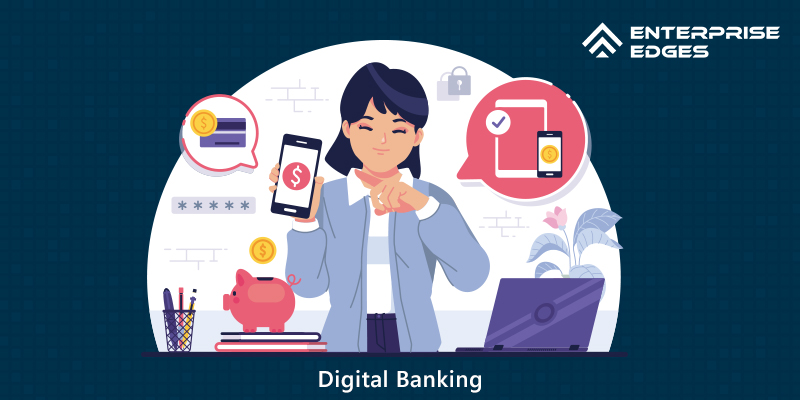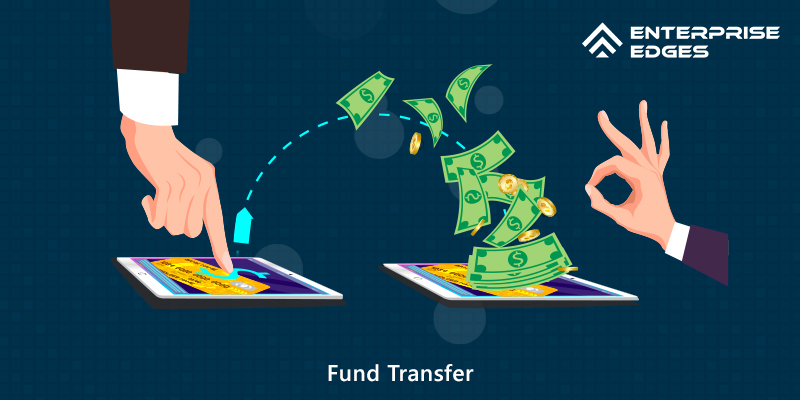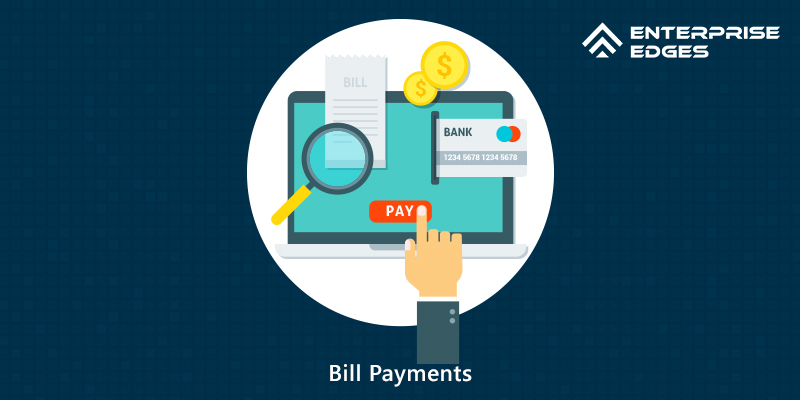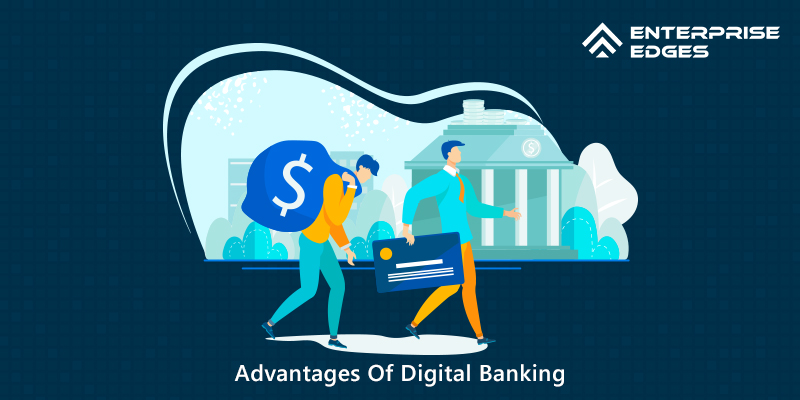Previously Banking was a time-consuming process. Customers had to keep a track of transactions or banking history through physical documents.
However, digitalization has now allowed everyone to experience paperless banking. The technological expansion has been a major driving force behind the growth of the banking sector in India. With increasing customer expectations, banks developed innovative products and services to ensure customer satisfaction.
Digitalization has redefined banking operations, products and services. Customers can perform transactions smoothly with higher speed, accuracy, and convenience. It has modified the way banks connect with their customers. The year 2020 highlighted the dire need to adapt to digital technologies across all sectors as soon as possible.
What Is Digital Banking?

Digital banking is the computerization of traditional banking services. It enables the bank’s customers to access banking products and use banking services via an online/electronic platforms. It is the digitalization of all banking operations to substitute the bank’s physical presence, eliminating the customer’s need to visit the branch.
Digital Banking Includes Activities Like:
- Cash deposits, withdrawals, and transfers
- Bill Payments
- Account management and services
- Applying for financial products
- Loan Management
- Portfolio Management
- Investment in financial services, etc.
Digital Banking Products And Services
Customers having bank accounts, with access to a stable internet connection and a smart device such as a laptop/PC, mobile phones, or tablets can avail of digital banking products and services, without visiting the bank’s branch physically.
1. Bank Statements
One can view and download bank statements for any specified period.
2. Cash Withdrawals
ATMs are widely present across cities and towns. Digital banking facilitates cash withdrawals anytime from an ATM.
3. Fund Transfer

The facility of transferring funds online through RTGS, NEFT, IMPS, and mobile banking applications is one of the most significant advantages of digital banking. Now there is a reduced demand for Cheques and demand drafts than before because of such online alternatives.
4. Managing Cheques
One can intervene in the cheque clearing process using digital banking to stop the payment if required. There could be different reasons for stopping cheques like the wrong amount, the wrong beneficiary name mentioned, or misplacement. In that case, by logging in, one can stop cheques through digital banking.
5. Mobile Banking
Mobile banking mainly shows the use of an application optimized for smartphones or tablets for digital banking services.
6. Bill Payments

A user can set up standing instructions for monthly debits in favor of a regular utility payment via auto-debit feature for bill payments.
7. Finance
One can open fixed deposit accounts, apply for loans, invest in Mutual Funds and buy insurance products through digital banking. Demat accounts can be linked to bank accounts to provide a uniform flow of funds for profitable investments.
8. Monitor Transactions
Digital banking allows the user to monitor account balances or outstanding with one click. Banks also send transaction alerts to the registered mobile number or email addresses. Transactions are updated almost as soon as they are performed.
The broadly used e-banking service among customers in India is ATM. Today the ATM service is not restricted to cash withdrawal only. After advancement, this facility can be used for various purposes including:
- Account balance inquiry
- Cash & cheque deposits
- Get bank statements
- Changing the Debit/Credit card PIN
- Transfer amount from one account to other bank accounts
- Making credit card payments, etc.
Methods Of Digital Payment
Currently, there are 10 different methods of digital payment available in India:
- Banking cards (Debit/credit or prepaid cards)
- Unstructured Supplementary Service Data (USSD)
- Aadhaar Enabled Payment System (AEPS)
- Unified Payments Interface (UPI)
- Mobile Wallets
- Bank Prepaid Cards
- PoS (Point of Sale) Terminals
- Internet Banking
- Mobile Banking
- Micro ATMs
Advantages Of Digital Banking

The customers can conduct various transactions using platforms like online applications and bank websites. It provides ease and convenience to the customers in managing an account.
The Following Are Some Advantages Of Digital Banking:
- Digital banking assists customers in performing banking functions from the comfort of their homes. It is also convenient considering the pandemic.
- Digital banking allows the user to operate banking services around the clock with 24×7 availability of access to its functions.
- With the advent of digital banking, there is reduced paperwork for banks’ employees. Banking is now paperless and customers can monitor records anytime, anywhere.
- All kinds of utility bills, including gas, electricity, phone, or other bills, and recharges can be done with one click. The customer can opt for reminders on upcoming payments and outstanding dues. There’s also an auto-debit facility to pay bills automatically with digital banking.
- Internet banking has contributed notably to online payments. Online shopping is simplified since payment gateways are integrated with online shopping portals.
- With the availability of smartphones at reasonable prices and internet access, digital banking services are expanding in remote areas. This is a step closer to holistic development.
- Digital banking-enabled fund transfers reduce the risk of counterfeit currency.
- It saves time, resources, and workforce since banking has become economical through digitalization. The efficiency and reach of banks are better and wider than before.
Conclusion
Digital transformation is an almost top priority for every bank today. Investments in technology and innovation are skyrocketing. With diminishing margins on deposits, rising competition, and an evolving consumer mindset, digitalization is no longer a choice but a necessity for businesses and banks equally.
